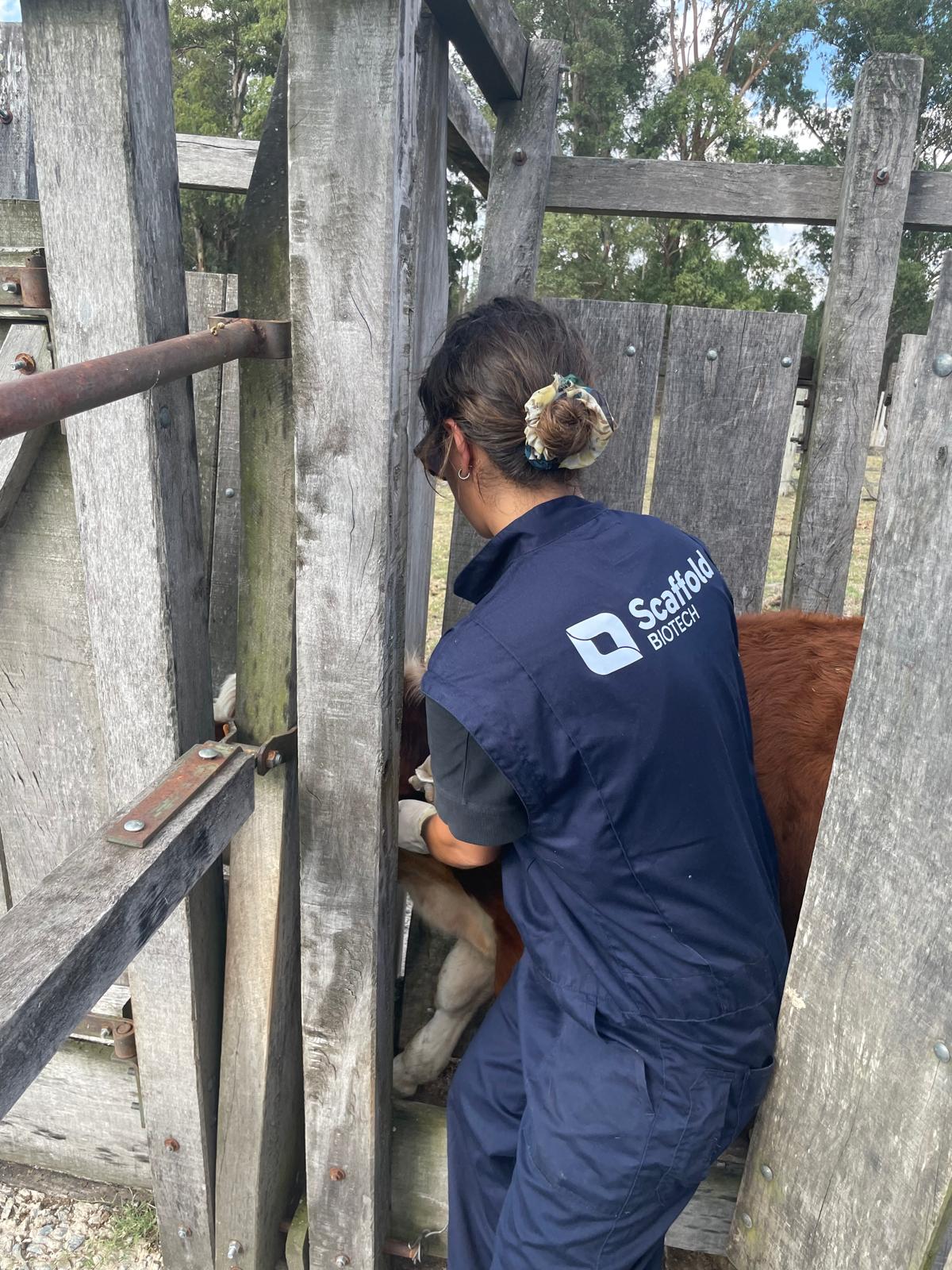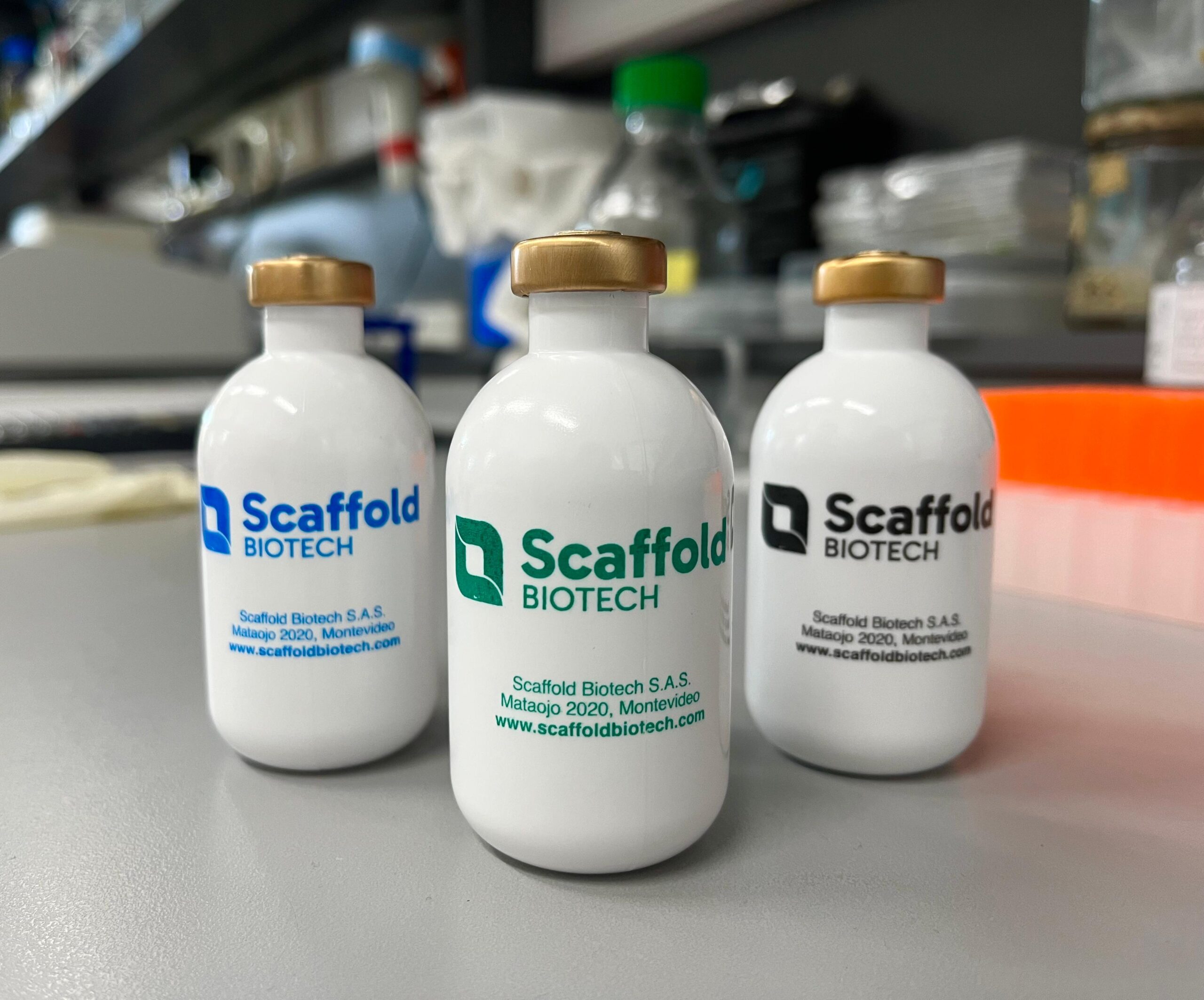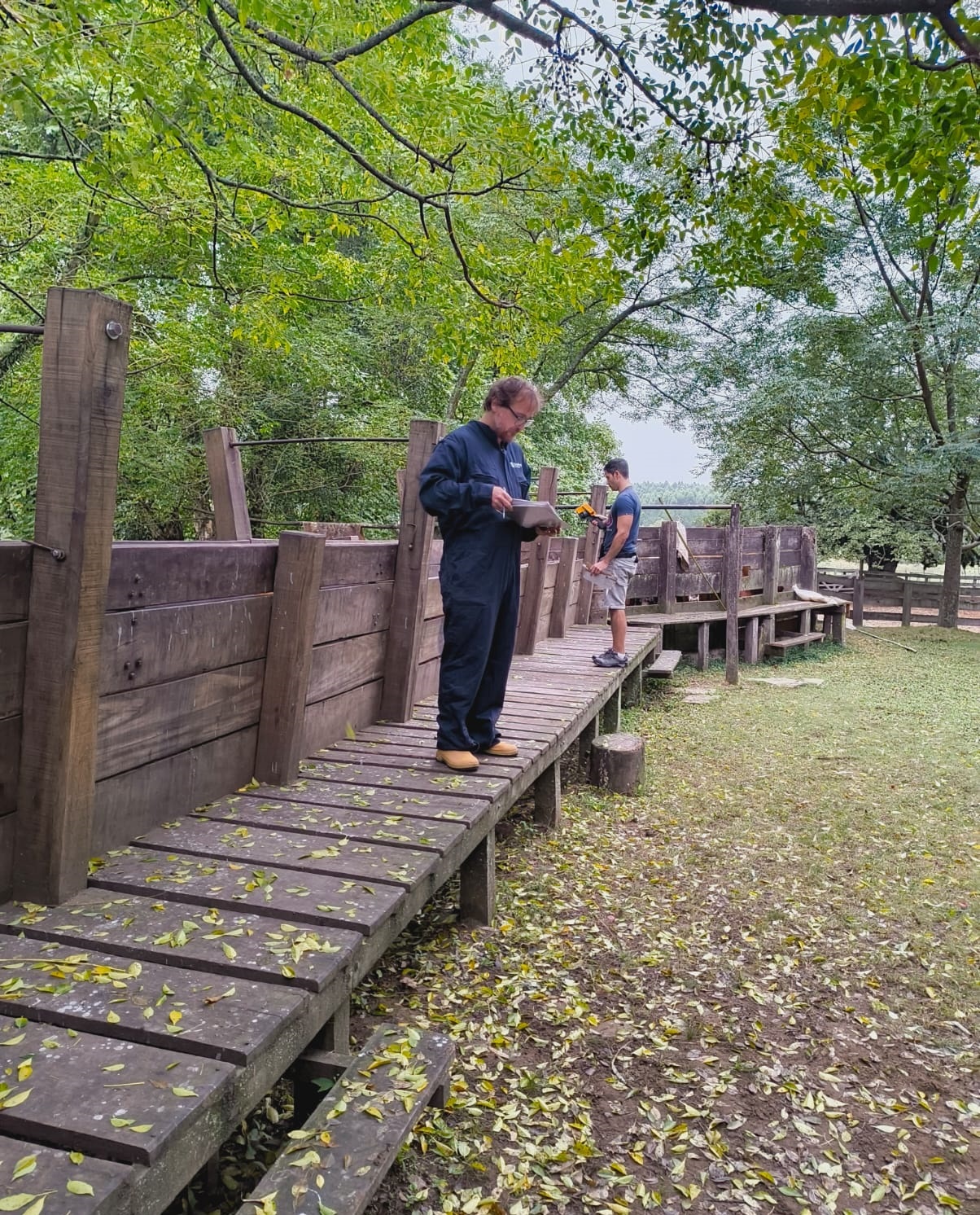The startup Scaffold Biotech, founded by Institut Pasteur de Montevideo researchers Agustín Correa and Matías Machado, is developing a tick vaccine that showed 90% effectiveness in field trials during the evaluation period. The vaccine will now undergo efficacy trials under controlled conditions, carried out by the Ministry of Livestock, Agriculture and Fisheries, to confirm its effectiveness before being offered for use at the production level as part of the national tick control plan.
The research that led to the creation of Scaffold Biotech began in mid-2021 at the institute. In 2024, the project received $750,000 in funding from LAB+ Company Builder to continue development, along with additional support from ANII. In this interview, Correa and Machado explain how the vaccine works, where the startup currently stands, and what they envision for the future.
You’ve been working on the research behind Scaffold Biotech for several years. What stage is the startup at now? How far along is the vaccine?
Agustín Correa (AC): We’re now starting to bring to life many of the things we worked on last year. Two major milestones include securing intellectual property protections and completing two cattle trials that confirmed the vaccine’s effectiveness.
We’re now beginning a third trial, which is very important for us. It involves animals in controlled conditions in collaboration with health authorities. This will allow us to measure the vaccine’s efficacy in those settings, which is critical for the future registration of the product.
What were the results of the trials?
AC: The results have been very promising. The first two trials were conducted under natural field conditions, in collaboration with researchers from the Veterinary School.
In the first trial, which started in the second half of 2023 and ended in early 2024, we observed over 76% efficacy.
We then improved the formulation and began a second field trial later in 2024 to assess the enhanced formula. The results showed that the vaccine has a 90% effectiveness rate during the period analyzed.
In both trials, we vaccinated cattle with the active ingredient of our vaccine and also had a control group. These were animals in their usual environments, where natural tick infestations occur. We monitored how the infestation progressed differently between the two groups, and we also assessed the reproductive aspects of the ticks. We saw a clear impact both on the number of ticks and their reproductive capacity.
Matías Machado (MM): The fields where we conducted the trials are in tick-endemic zones, where the issue is especially serious. We’re running them in Rivera, a particularly challenging region due to forestry and environmental conditions. The goal is to test the vaccine in a complex, real-world scenario to verify its true impact under demanding conditions.

How does the vaccine work?
MM: We selected specific molecules from the tick’s gut. Then, using protein engineering tools, we produced an antigen—a molecule that triggers an immune response in the host—and vaccinated cattle with it. This prompts cows to generate antibodies against ticks. When a tick bites the animal and ingests its blood, it takes in the antibodies produced by the cow.
AC: That way, the cow’s immune system attacks the tick, which can lead to the parasite’s death. Even if it doesn’t die, its reproductive ability is impaired—which is crucial, as a single tick can lay between 2,000 and 4,000 eggs.

How could this vaccine benefit the livestock industry?
MM: We expect the vaccine to help improve productivity by reducing the impact of tick-borne diseases, which has significant economic implications. Issues like multi-resistance (microorganisms resisting multiple antibiotics) and misuse of acaricides are starting to result in Uruguayan meat being rejected in foreign markets. These are not just isolated export losses—they can affect Uruguay’s reputation.
AC: There are also important environmental benefits. Since the vaccine is a biological method, there’s no risk of environmental contamination.
MM: Another positive impact is on withdrawal periods—the time between treatment and when an animal can be processed for meat. With a vaccine, that period is zero. With other treatments, it can take days or even months.
What challenges and advantages do you face developing this kind of innovation from Uruguay?
MM: There are limitations—we’re still building up infrastructure, and access to certain supplies or equipment is limited, expensive, or not locally available. Despite those challenges, I think the stage we’re at with Scaffold is a major milestone. Taking an idea from a computer model, through lab testing, and into full-scale field trials to arrive at a final formulation is a huge accomplishment.
AC: One of Uruguay’s advantages is that we’re in the right place for the problem we’re addressing. Ticks are a major issue in the region, so we’re embedded in the ecosystem that needs this solution. That facilitates many things. Plus, there’s a personal reward in contributing to the country that educated us. We’re graduates of the University of the Republic (Udelar), and it means a lot to give something back.

What do you hope for in the coming years for Scaffold Biotech?
MM: We hope to hit all these key milestones: getting the vaccine to market and expanding into the region. This is a highly relevant market—20% of the world’s cattle industry is here, and it faces the same problems. We want to offer a solution not just for Uruguay, but for the entire region—and potentially beyond. The goal is to complete the current trials and challenges, then scale up.
AC: In addition, we are about to begin a controlled trial with the Ministry of Livestock involving 6,000 animals. This will allow us to confirm the vaccine’s efficacy while also providing a solution for farms dealing with tick infestations. Afterwards, the vaccine can be offered as part of the national tick control plan.

